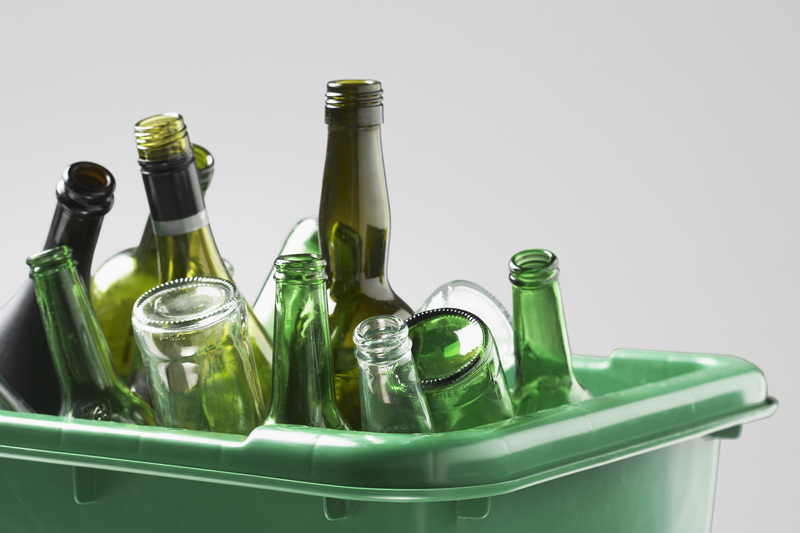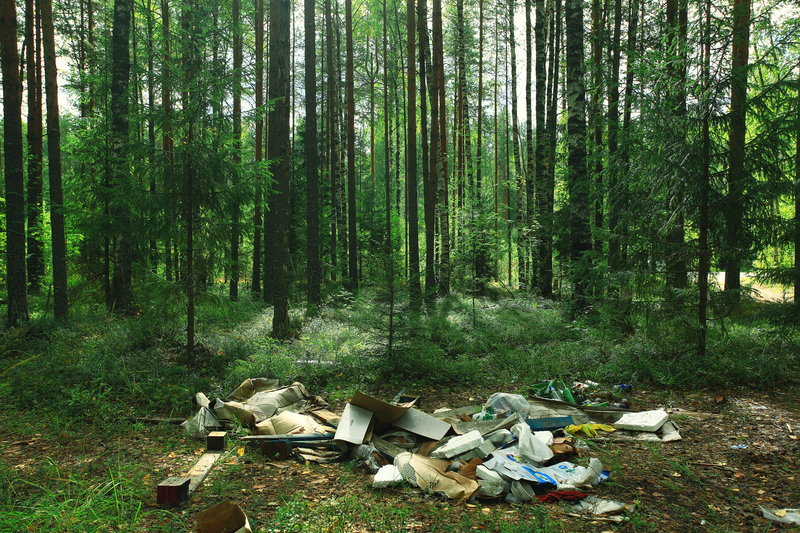Repurpose and Reinvent: Transforming Waste into Art
Repurposing waste materials to create stunning works of art is more than a creative movement--it's a powerful statement about sustainability, innovation, and the boundless potential of human imagination. In this article, we explore the fascinating world of transforming discarded materials into artistic masterpieces. Discover how artists, designers, and communities worldwide are embracing the philosophy of "repurpose and reinvent," turning trash into treasure, and in the process, reshaping our view of both waste and art.

Why Transform Waste into Art?
Art made from waste--often called recycled art, upcycled art, or eco-art--not only captivates the eye but also addresses pressing environmental concerns. With landfills overflowing and natural resources depleting, artists are finding ingenious ways to give new life to materials that would otherwise harm the planet. Repurposing waste into art encourages:
- Environmental Awareness: Highlighting issues of consumerism, pollution, and sustainability.
- Innovation: Fostering creative solutions and fresh perspectives on material use.
- Community Engagement: Inspiring collective action and civic pride through collaborative art projects.
- Economic Opportunity: Providing affordable raw materials and supporting green economies.
The Evolution of Upcycled Art
From Dada to the Modern Day: The History of Repurposed Art
The concept of transforming waste into art isn't new. Since the early 20th century, pioneering artists have challenged conventional ideas about art and materials. The Dadaists repurposed everyday objects, and Pablo Picasso's cubist sculptures incorporated scraps of wood and metal. Over the decades, movements like assemblage, found-object art, and environmental art have expanded on the idea, making waste art a central theme in contemporary creativity.
Today's Sustainable Art Movement
In recent years, the trend of repurposing waste in art has gained unprecedented momentum. Eco-friendly artists across the globe are using discarded materials--from plastics and glass to textiles and electronics--to raise awareness and champion sustainability. Their works are exhibited in galleries, public spaces, and online, inspiring millions to rethink their relationship with waste.
The Creative Process: How Art Emerges from Waste
Collecting and Sorting Materials
Artists begin by sourcing waste materials from a variety of places:
- Recycling centers and scrapyards
- Household garbage and discarded packaging
- Old furniture or broken appliances
- Industrial waste and factory offcuts
- Beach cleanups and urban scavenging
This stage is a blend of inspiration and practicality--selecting pieces for their form, color, texture, or even their symbolic meaning.
Conceptualizing the Artwork
Once materials are collected, artists conceptualize how to repurpose and reinvent these items. This involves seeing beauty in what others overlook and imagining new functions for the forms at hand. Some artists plan meticulously; others let the materials guide their creative flow.
Assembly and Transformation
This is where the magic happens. Artists may clean, cut, reshape, weld, glue, paint, or otherwise manipulate discarded items to create visually striking pieces. Techniques range from simple assemblages to highly technical constructions involving engineering and digital fabrication.
The Message Behind the Art
Every piece of waste-reinvention art carries a message--sometimes explicit, sometimes abstract. Whether it's a sculpture made entirely of plastic bottles or a mosaic of electronic parts, the medium becomes part of the message, provoking thought about modern consumption and the potential for positive change.
Inspiring Examples: Artists Who Turn Trash Into Treasure
Vik Muniz - Beauty from the Binary
Brazilian artist Vik Muniz creates breathtaking portraits and landscapes from trash gathered in landfills. His work, documented in the acclaimed film "Waste Land," highlights the lives of people who rely on scavenging while challenging viewers to reconsider the value we assign to materials and labor.
El Anatsui - Bottlecaps Transcended
The Ghanaian sculptor El Anatsui crafts monumental tapestries from thousands of discarded liquor bottle caps. These shimmering, fabric-like installations speak to themes of transformation, colonial history, and ecological awareness.
Jane Perkins - Masterpieces Remixed
British artist Jane Perkins gives new life to classic artworks by recreating them with found objects like buttons, beads, and plastic toys. Her vibrant collages demonstrate both the versatility of waste and the enduring power of artistic vision.
Bordalo II - Urban Wildlife Emerges
Portuguese street artist Bordalo II creates massive animal sculptures from urban junk--car parts, old tires, and plastic waste--drawing attention to the impact of pollution on wildlife and urban ecosystems.
How Communities Are Repurposing Waste Into Public Art
Mural Projects and Collaborative Installations
Across the world, towns and cities are embracing the repurpose-and-reinvent ethos by involving local communities in public artworks made from waste. Projects may include:
- Schoolchildren creating murals from bottle caps
- Neighborhood mosaics assembled from broken ceramics
- Festival sculptures built from recycled metals and plastics
These efforts foster community pride, beautify public spaces, and reinforce sustainable habits.
Workshops and Educational Programs
Art centers and environmental organizations frequently offer workshops that teach children and adults how to create art from discarded materials. These programs encourage environmental responsibility and cultivate artistic skills, empowering participants to see waste as a resource rather than a burden.
Benefits of Repurposing and Reinventing Waste Through Art
- Reduces Landfill Waste: Transforming waste into art diverts materials from landfills, extending their useful life.
- Boosts Creativity: Working with unconventional materials can lead to truly unique and innovative art forms and ideas.
- Encourages Sustainability: By raising awareness, artists inspire consumers to rethink their own habits and choices.
- Promotes Mental Well-being: Many find the act of creative repurposing therapeutic and empowering.
- Celebrates Resourcefulness: Turning trash into treasure showcases human ingenuity and resilience.
Tips for Making Art from Discarded Materials
Start Small and Local
You don't need a fancy studio or expensive tools. Start by exploring your own home or neighborhood for discarded items--old newspapers, cardboard boxes, bottle caps, or broken toys. Let what you find spark your imagination.
Think Beyond Traditional Art
Repurposed art isn't limited to paintings or sculptures. Consider wearable art, furniture, jewelry, or functional objects. The only limit is your creativity.
Prioritize Safety
Some materials--like sharp metals, electronics, or chemicals--can be hazardous. Always wear gloves and protective gear, especially when repurposing industrial or electronic waste.
Embrace Imperfection
Part of the beauty of upcycled art is its uniqueness. Don't worry if your creations aren't "perfect." Embrace the quirks and stories each material brings.
Share Your Work
Document your process and finished pieces. Share your artwork with friends, online communities, or at local exhibitions. Your creativity could inspire others to reinvent waste as well.
Modern Innovations in Waste Art
Tech Meets Trash: Digital Fabrication and E-Waste
As technology advances, artists are exploring new ways to repurpose electronic waste (e-waste) using 3D printing and digital tools. This fusion of old and new results in eye-catching pieces that address the growing challenge of technological obsolescence.
Biodegradable and Living Art
Some contemporary artists use organic waste--like coffee grounds, dried flowers, or food scraps--to make compostable artworks. Others experiment with living installations: moss graffiti, vertical gardens, or sculptures seeded with plants, transforming waste into a living legacy.
Repurposing and Reinventing for the Future
As environmental concerns escalate, the movement to repurpose and reinvent waste into art becomes increasingly important. Artists continue to push boundaries--challenging assumptions about beauty, utility, and sustainability. Their work acts as a catalyst for broader change, inspiring individuals, industries, and governments to reconsider the lifecycle of materials.
Ultimately, transforming waste into art goes beyond aesthetics. It's an act of hope and resilience--one that empowers all of us to imagine new possibilities for ourselves and the planet. With every bottle cap mural, plastic bag sculpture, or recycled metal installation, artists are proving that even the most unpromising materials can be reborn, reinvented, and celebrated.

Frequently Asked Questions about Art from Waste
What materials can be repurposed for art?
Almost anything! Common materials include plastic bottles, glass jars, paper, cardboard, fabric scraps, metal, wood, tires, electronics, and even organic matter like dried leaves or food remnants.
Is creating art from waste good for the environment?
Absolutely. Repurposing waste reduces the amount of garbage sent to landfills and raises awareness about recycling, conservation, and sustainability.
How can I get started with making recycled art?
- Start by collecting discarded items from your home or neighborhood.
- Clean and sort materials according to color, shape, or texture.
- Research ideas and techniques--online or at community workshops.
- Experiment and let your creativity guide you.
How do artists benefit from working with waste?
In addition to environmental impact, artists benefit creatively, discovering new forms and methods. Plus, using readily available materials can keep production costs low and spark innovation.
Conclusion: The Art of Repurpose and Reinvent
Repurpose and reinvent is not just a trend--it's a movement that's reshaping how we think about waste, art, and our impact on the world. By transforming discarded materials into artworks, creative individuals and communities are leading the way toward a more sustainable, resourceful, and inspired future.
Whether you're an established artist, a student, or simply someone looking to make a difference, there's a place for you in the world of waste-to-art innovation. Embrace the challenge. See beauty where others see trash. And join the global movement to repurpose and reinvent--turning the ordinary into the extraordinary, one piece of waste at a time.



